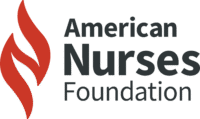Charting a path to zero tolerance
April 16, 2021, marked a key milestone in the journey to end workplace violence in healthcare, when the Workplace Violence Prevention for Health Care and Social Service Workers Act (H.R. 1195) passed with wide bipartisan support in the U.S. House of Representatives. This bill, which would require the Occupational Safety and Health Administration (OSHA) to establish and enforce specific standards for healthcare and social service employers, is one of the best things the House could have done for our profession.
The measure—not yet taken up by the U.S. Senate at press time—validates all that the American Nurses Association (ANA) and our partners have been working toward for years.
Available data suggest workplace violence is underreported and far too common. The Government Accountability Office estimates that rates of workplace violence in healthcare and social assistance settings are 5 to 12 times higher than the estimated rates for workers overall. We know that up to one-quarter of nurses are thought to experience some type of violence on the job, yet just 20% to 60% of incidents are reported.
The consequences of workplace violence can affect nurses profoundly and reach deep into organizations. The new ANA video, Silence No More, End Nurse Abuse (https://bit.ly/3vtbZJS), which gives powerful voice to nurses’ actual experiences, relays one nurse’s report that even 30 years later she still gets upset about a colleague’s inappropriate behavior toward her.
Multiple studies have shown that workplace violence adversely affects the quality of patient care and outcomes. There’s an economic toll, too: About 13% of missed workdays are the result of workplace violence.
Some nurses might believe nothing will come from filing an incident report, or that they will be retaliated against. Others might rationalize not reporting due to the circumstances, such as being struck by a patient with dementia, or believing that they in some way provoked a colleague’s bullying behavior. These are understandable reactions, but any type of workplace violence is unacceptable. Reporting empowers us with an actionable step toward zero tolerance.
Just as it is essential for nurses to report incidents, employers must have policies in place to protect workers. Some have zero-tolerance policies backed by user-friendly reporting procedures and a willingness to take effective mitigation steps. Others have less committed track records.
H.R. 1195 would create a more level playing field and ultimately require more of employers by directing OSHA to develop a specific standard to address workplace violence using rulemaking procedures that engage stakeholders such as ANA.
Workplace violence is a key legislative issue that more than 300 participants discussed in over 300 meetings with Congressional offices on June 10 during ANA’s Virtual Hill Day. These sessions further elevated the urgency to address workplace violence and to enact a final bill, but we need to build on this momentum. Nurses who couldn’t participate in this event still can help effect change at national, state, and local levels, as well as at their own institutions.
Visit ANA’s End Nurse Abuse page (endnurseabuse.org) to learn how to easily engage with Congress on workplace violence, and join nearly 30,000 colleagues who have signed the #EndNurseAbuse Pledge. See ANA’s recommendations for both employees and employers on reporting and preventing incidents of workplace violence. Access the #EndNurseAbuse resource guide for clear steps to respond to and report acts of workplace violence.
By acting collectively, being prepared for workplace violence, and reporting incidents when they occur, we not only can imagine but also achieve zero tolerance of this insidious problem.


Ernest J. Grant, PhD, RN, FAAN
President, American Nurses Association




















1 Comment.
Would love to see the references!